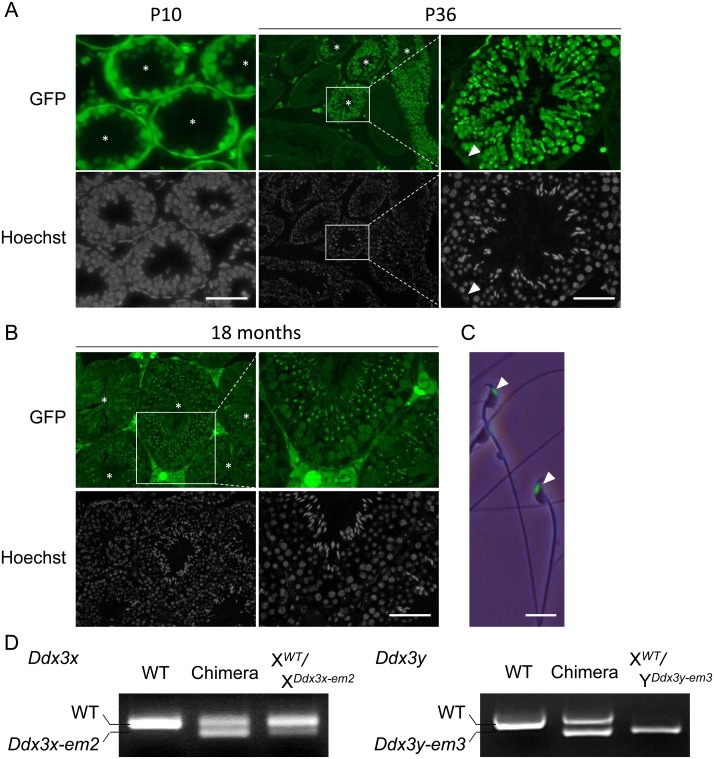Fig. 4.
Ddx3x and Ddx3y double KO germ cells in chimeric males produce functional spermatozoa. (A) (Left) Testicular sections of Ddx3x and Ddx3y double KO ES chimeric males at postnatal day 10 (P10). Asterisks (*) indicate seminiferous tubules which contain ES cell contributed germ cells (EGFP positive). Scale bar: 50 µm. (Middle) Testicular sections of Ddx3x and Ddx3y double KO ES chimeric males at P36. Asterisks (*) indicate seminiferous tubules which contain ES cell contributed germ cells (EGFP positive). (Right) Magnified images of middle panel. White arrowhead indicates a Sertoli cell labeled with EGFP. Scale bars: 50 µm. (B) Testicular sections of double KO ES chimeric males at 18 months of age. Asterisks (*) indicate seminiferous tubules which contain ES cell contributed germ cells (EGFP positive). Scale bar: 50 µm. (C) Sperm morphology of double KO ES chimeric males. White arrowheads indicate spermatozoa derived from ES cells (EGFP positive heads of spermatozoa). Scale bar: 10 µm. (D) Genotyping of F1 females (Left; XWT/XDdx3x-em2) and males (Right; XWT/YDdx3y-em3) derived from chimeras. Ddx3x KO (29-bp deletion) band is slightly smaller than the wild-type. Ddx3y KO (125-bp deletion and 1-bp insertion) band is slightly smaller than the wild-type.

